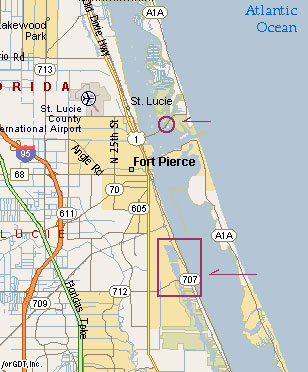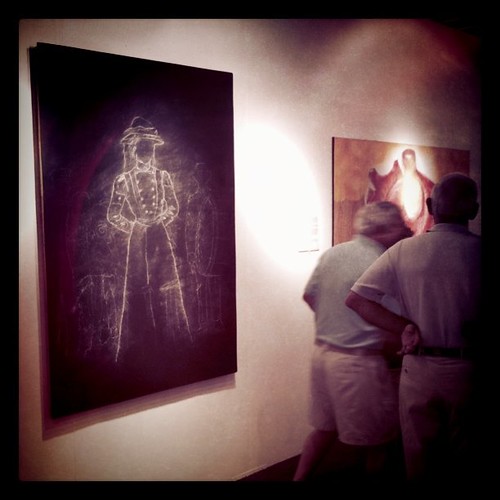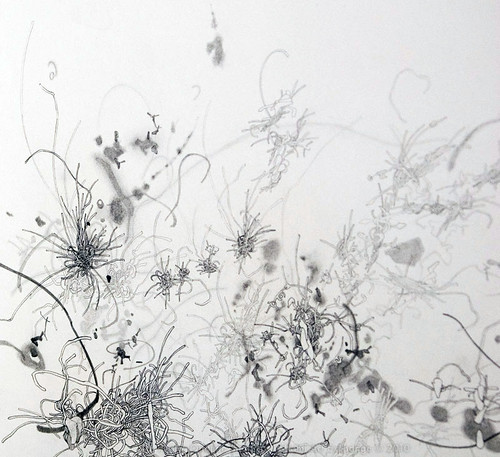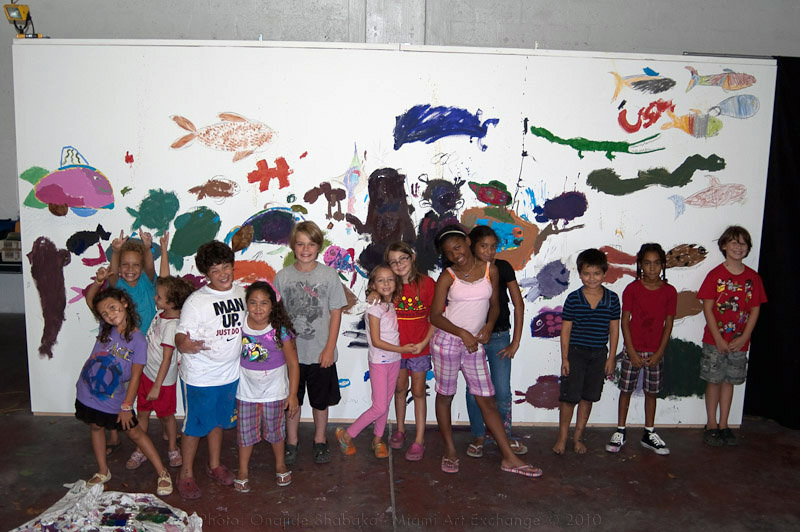Walking The River Making Art
“Walking The River Making Art”
[Postponed due to infrastructure damage at Jack Island Preserve.]
Despite its ubiquity in the everyday walking is an activity obscured by its own practical functionality. It is employed literally and understood metaphorically as a slow, inefficient, and increasingly anachronistic means to a predetermined end. Rarely is walking considered as a distinct mode of acting, knowing, and making. As its necessity diminishes and its applications rarefy, the potential of walking as critical, creative, and subversive tool appears only to grow. Conceived of as a conversation between the body and the world, walking becomes a reciprocal and simultaneous act of both interpretation and manipulation; an embodied and active way of shaping and being shaped that operates on a scale and at a pace embedded in something seemingly more authentic and real.
Using the walk as a guiding metaphor “Walking The River Making Art” is a multifaceted effort that seeks to nurture both a theoretical and applied approach to knowing and interpreting place as we experience and construct it through walking.
A Guided tour of the Savannas, the Indian River Lagoon, and other “land art” significant landmarks, will be organized between July and August, 2011. (Travel date will be finalized by 15 July, 2011.) Arrangements will be for a maximum of four (4) persons per tour. Tours are one day, arriving on site by 9:00 a.m., and returning by sundown. Contact me via the comment form below, or the contact page for costs and additional questions.
**NOTE: Jack Island Preserve is closed pending construction of a replacement bridge to the island. Information current as of 5/31/2011. For latest news, see the Fort Pierce Inlet State Park website.

Savannas Preserve State Park
St. Lucie County, Florida
(in the red rectangular area on the map below)

Indian River Lagoon
N. Hutchinson Island
St. Lucie County, Florida
(photo credits: Onajide Shabaka)

Tips for Art Collectors
TIPS FOR COLLECTORS: SAFE PACKING AND SHIPPING
1. Before packing a painting or work of art, be sure that it is secure in the frame and that there are no loose pieces that could potentially damage the art while in transit. Ensure that glassine is not touching the surface of the painting to avoid adhesion to the varnish layer. It is best to wrap paintings in glassine or paper first, which will help to ward off any condensation that might occur from moisture exposure, followed by a protective layer of Mylar or polyethylene. Dartek, a polyester sheeting that “breathes”, can be used with no inner wrapping for short trips.
2. Do not allow packing material to touch the surface of a painting or work of art. If need be, create a shadow box. Wrap the corners or other exposed surfaces in a thick layer of cardboard followed by a layer of bubble wrap. If a frame seems unstable, remove it and wrap it separately with cardboard and bubble wrap. Paintings should be faced with cardboard.
3. Do not wrap a painted surface directly in bubble wrap. Put a layer of moisture-resistant material (such as polyehthylene) between the item and the bubble wrap, and apply the bubble wrap with the bubbles facing away from, rather against, the surface. This will prevent the bubbles from denting the item. The outwards-facing bubbles will also be able to better protect the item during transport and prevent the bubble from causing a “honey-comb” effect to a painting’s varnish layer. If you are reusing packing material, make sure that it is clean and free of mold, mildew or debris. It may be worth the small investment to purchase new, clean materials for each move.
4. Try to ship artwork at the start of the work week versus the end of the work week to avoid over handling. Standard carriers will often store or pile items in a warehouse during weekends. Never roll or fold a painting using a tube. Both techniques require extensive art-handing experience and should only be carried out by conservators or professional art movers.
5. For short trips it may be tempting to simply wrap a painting in a towel or blanket, but this is generally not a safe method as the surface of the wrapping can scratch the surface of the painting. This is particularly true for items with loose or flaking paint, which should ride uncovered face-up. If the item must be wrapped, it is best to drape it loosely with a polyethylene drop-cloth, available from a hardware store.
6. If traveling by car, clear the area where the painting will be placed of any items that may come loose and either damage the item or prevent it from riding safely. In warm and humid climates, the vehicle in which the art will be transported should be pre-cooled in order to keep it in a stable environment; in northern areas, it should be preheated.
7. If a painting has had a long trip or if there is a climatic change in its environment and you suspect that condensation may have occurred, it should be unwrapped as soon as possible. The safest option is to hire professional art movers and packers who use climate-controlled vehicles fitted with a low-vibration “air ride” feature to transport art. During long trips the movers should ensure that the truck is protected and the temperature controlled with alarm systems for overnight stays. If you feel that your painting is not being handled correctly, let the company know of your concerns. It is recommended that professionals entrusted with your collection have had employee background checks which should be routine policy.
Art Naples – Spanish

Noticias » Centroamérica
Art Naples, nueva feria de arte contemporáneo, fotografía y diseño en Florida
18 de Marzo de 2011 • 11:11
Miami (EE.UU.), 18 mar (EFE) – Más de 1.200 obras de trescientos artistas modernos y contemporáneos se exhibirán a partir de hoy en la feria Art Naples (Naples, Florida), que apuesta en su primera edición por el protagonismo compartido de instalaciones, fotografía, vídeo, escultura y diseño.
La muestra recoge las “nuevas tendencias y la obra de importantes artistas históricos de la década de 1970, así como una sección muy cuidada sobre fotorrealismo”, dijo a Efe Lee Ann, organizadora de la feria, que tiene lugar en el renovado Naples International Pavillion.
Ann Lester, la organizadora, destacó la exhibición “Miami-Wave”, “una selección -dijo- de los mejores artistas promovidos por los más significativos marchantes de Miami” de gran atractivo para la comunidad del sur de Florida, “tan multicultural”.
En esta sección destacan los artistas que exponen en Artlab33 | Art Space, especialmente Onajide Shabaka, y el colombiano Pablo Tamayo (Bogotá, 1972), cuya obra es exhibida por la galería de Miami Bernice Steinbaum.
De Argentina llegan las galerías Adriana Budich (Buenos Aires) y Artis Galería (Córdoba) y, de Bogotá (Colombia), la Galería Baobab.
Los organizadores de la feria, Lee Ann y David Lester, han realizado ya más de 70 citas internacionales de arte en ciudades como Londres, Hong Kong, Nueva York, Chicago o Dallas y, actualmente, organizan también la Feria de Antigüedades y Arte Internacional de Naples. EFE emi/cs/agp

Miami Wave at Art Naples
Art Naples – March 18 – March 21, 2011
“Miami Wave” exhibition with gallery representation by Artlab33 Art Space

Art Collective Salutes Kwanzaa Principles
Originally posted in South Florida Times
Written by Cynthia Roby
Artists in the Kuumba Artists Collective of South Florida are staging their annual salute to the seven principles of Kwanzaa with an exhibition in the ArtLab33 studio in the Miami neighborhood of Wynwood.
“Putting an exhibit together in the spirit of all of the traditional African community values is our way to celebrate the seven principles,” Dinizulu Gene Tinnie, the collective’s founding member, said.
“It’s also a way to introduce young people to the arts, teach them about the principles [and] let them know that there is art that celebrates who we are,” Tinnie said.
The collective, named for one of the principles of Kwanzaa signifying creativity, hosted the opening reception for its Kuumba Kwanzaa Art Exhibition on Dec. 22. It will run until Jan. 1, the last day of Kwanzaa.

The exhibit features the diverse, original works of 16 photographers, draftsmen and sculptors.
It includes pieces from members of the collective that were exhibited during the time of Art Basel 2010, according to Altiné, the exhibition organizer.
“We kept the Basel exhibition up, added a few pieces and then turned it into the Kwanzaa exhibit,” Altiné said.
Among the works being exhibited by Miami artist Robert McKnight is a tile and concrete sculpture titled Mockingbird.
“Everybody paints and draws but I like to do something different with my artwork,” said McKnight, whose studio is in Miami’s historic Bakehouse Art Complex.
The lapis-colored tiles used in the piece, he said, were leftovers from a mosaic mural.
McKnight primarily works in 3D, using wood collages to build relief forms exploiting shadows and light. Instead of working with wood, McKnight said, he uses a collage approach, allowing the patterns to self-complete.
“This way, the piece is more chaotic, spontaneous and non-objective,” he explained.
Between 1993 and 1998, Miami Lakes photographer James A. Rush captured historic outdoor murals painted by the late Miami artist Oscar Thomas. One piece is titled Prince of Peace.
“The photo was taken before the mural’s renovation,” said Rush, who developed an interest in photography at age 6.
The 10-foot-by-12-foot Prince of Peace mural featuring a montage of portraits of the slain human rights leader Martin Luther King Jr. and a quotation in script from his last speech, has graced the corner of Northwest Seventh Avenue and Dr. Martin Luther King Jr. Boulevard since 1994.
Rush’s 16-by-20-inch framed photo capturing the black-and-white mural in its original state was photographed shortly after its completion. The mural’s line form, texture and light are well preserved in the picture.
Thomas, who died in 1997 at age 41, is remembered for his social consciousness, the pride he had in his cultural heritage, the history reflected in his paintings and the murals he painted on buildings around Overtown, Liberty City and Opa-locka.
Each year the Kuumba Artists Collective honors Thomas’ work through an Oscar Thomas Memorial People’s Art Exhibition in Liberty City.
Onajide Shabaka, owner of ArtLab33 described the Kwanzaa exhibit as “a valiant effort.”
“An artist becoming part of the art conversation in Miami is a great experience,” Shabaka said. “I was happy to offer the space.”
African Roots / American Fruits
African Roots / American Fruits – December 2 – 31, 2010
Exhibition curated by Robert McKnight
New and Recents Works from Kuumba Artist Collective
As Art Basel Miami Beach, which annually transforms Miami and Miami Beach into a global Mecca for visual art for a few heady days in early December, Kuumba Artist Collective will be marked by an unprecedented presence of African world art (from the Diaspora and the Motherland). This “visual jazz concert” of paintings, drawings, sculptures and other works featuring several local artists takes place in Miami’s Wynwood Art District, at Artlab33 | Art Space, 2085-B NW 2nd Avenue. The exhibition is open from 10:00 a.m. to 10:00 p.m. during Art Basel Miami Beach, and will continue throughout the month of December, during December 11th gallery walk and by appointment.
This exhibition, sponsored in part by the City of Miami Community Redevelopment Agency (CRA).
Sweat Portfolio, Phase 1
Hidden in the Mangroves
Re/producing Complexity
“RE/PRODUCING COMPLEXITY”
Exhibition Dates: 11 June – 10 July, 2010

Exhibition Dates: 11 June – 10 July, 2010
RE/PRODUCING COMPLEXITY at Artlab33 | Art Space features artists Raúl Perdomo and Liz Atzberger. Both artist’s paintings and drawings take a similar route to reach their goals in a field of rich textures and enveloped in swirls of color.
“Re/producing Complexity” refers to Complexity Theory and Chaos Theory, systems that are too complex to accurately predict their future, but nevertheless exhibit underlying patterns that can help us cope in an increasingly complex world. Obviously, visual representations are not the same as working with mathematical computations. However, both artists continue a longstanding tradition of exploration and experimentation with abstract phenomena as the route to their ends.
Downloadable Press Release / Images – click to view

Raúl Perdomo
Casualty
Watercolor, gouache, ink, acrylic and pencil on paper
30 x 22.5 in.

Raúl Perdomo
Vortises (detail)
Ink on paper
10 x 7 in.

Liz Atzberger
“Xo”
mixed media on d’arches paper
84 x 42 in.



